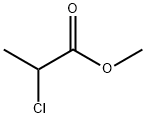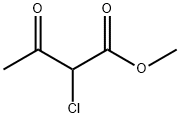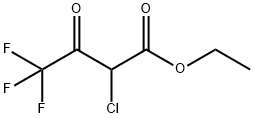2-Chloropropionic acid
Synonym(s):(±)-2-Chloropropionic acid
- CAS NO.:598-78-7
- Empirical Formula: C3H5ClO2
- Molecular Weight: 108.52
- MDL number: MFCD00004224
- EINECS: 209-952-3
- SAFETY DATA SHEET (SDS)
- Update Date: 2024-12-18 14:15:30

What is 2-Chloropropionic acid?
Chemical properties
colourless liquid
The Uses of 2-Chloropropionic acid
- 2-Chloropropionic acid is used in the preparation of propargyl 2-chloropropionate (PCP), an atom transfer radical polymerization (ATRP) initiator, by the esterification of propargyl alcohol.
- It can be employed in the synthesis of a biologically active chitin derivative, (1-carboxyethyl) chitosan.
- It can be treated with o-phenylenediamine phosphate to synthesize benzimidazole derivatives.
The Uses of 2-Chloropropionic acid
Intermediate for weed killers.
General Description
A pale liquid with a slight odor. Sinks in and mixes with water. Only aluminum, stainless steel or steel covered with a protective lining or coating may contact the liquid or vapor.
Air & Water Reactions
Water soluble.
Reactivity Profile
2-Chloropropionic acid is neutralized in exothermic reactions by all bases. Reacts with aqueous solutions containing a chemical base and dissolves if neutralization generates a soluble salt. May react with active metals to form gaseous hydrogen and a metal salt. May corrode or dissolve iron, steel, and aluminum parts and containers. Reacts with cyanide salts to generate gaseous hydrogen cyanide. Reacts with diazo compounds, dithiocarbamates, isocyanates, mercaptans, nitrides, and sulfides to generate flammable and/or toxic gases and heat. Reacts with sulfites, nitrites, thiosulfates (to give H2S and SO3), dithionites (SO2), to generate flammable and/or toxic gases and heat. Reacts with carbonates and bicarbonates to generate a harmless gas (carbon dioxide) but some heat. Can be oxidized by strong oxidizing agents and reduced by strong reducing agents. These reactions generate heat. A wide variety of products is possible. May initiate polymerization reactions or catalyze other chemical reactions. Fire produces highly toxic chloride fumes [USCG, 1999].
Hazard
Combustible. Toxic by skin contact. Male reproductive damage.
Health Hazard
Harmful if inhaled. Irritating to throat. May cause severe skin and eye burns. Harmful if absorbed through skin.
Flammability and Explosibility
Non flammable
Biochem/physiol Actions
2-Chloropropionic acid on oral administration induces necrosis of granule cell layer of rat cerebellum.
Safety Profile
Poison by skin contact. A corrosive. Combustible when exposed to heat or flame. To fight fire, use water, foam, alcohol foam. When heated to decomposition it emits toxic fumes of Cl-. See also 3-CHLOROPROPIONIC ACID.
Purification Methods
Dry it with P2O5 and fractionally distil it under vacuum. [Beilstein 2 IV 745.]
Properties of 2-Chloropropionic acid
| Melting point: | -12--14 °C |
| Boiling point: | 170-190 °C(lit.) |
| Density | 1.182 g/mL at 25 °C(lit.) |
| vapor pressure | 4 mm Hg ( 20 °C) |
| refractive index | n |
| Flash point: | 215 °F |
| storage temp. | Store below +30°C. |
| solubility | H2O: soluble |
| form | clear liquid |
| pka | 2.96±0.10(Predicted) |
| color | Colorless to Almost colorless |
| PH | <1 (200g/l, H2O, 20℃) |
| Water Solubility | freely soluble |
| BRN | 1720259 |
| Exposure limits | ACGIH: TWA 0.1 ppm (Skin) |
| Stability: | Stable. Incompatible with strong oxidizing agents, strong bases. |
| CAS DataBase Reference | 598-78-7(CAS DataBase Reference) |
| NIST Chemistry Reference | Propanoic acid, 2-chloro-(598-78-7) |
| EPA Substance Registry System | 2-Chloropropionic acid (598-78-7) |
Safety information for 2-Chloropropionic acid
| Signal word | Danger |
| Pictogram(s) |
 Corrosion Corrosives GHS05  Exclamation Mark Irritant GHS07 |
| GHS Hazard Statements |
H302:Acute toxicity,oral H314:Skin corrosion/irritation |
| Precautionary Statement Codes |
P260:Do not breathe dust/fume/gas/mist/vapours/spray. P280:Wear protective gloves/protective clothing/eye protection/face protection. P303+P361+P353:IF ON SKIN (or hair): Remove/Take off Immediately all contaminated clothing. Rinse SKIN with water/shower. P305+P351+P338:IF IN EYES: Rinse cautiously with water for several minutes. Remove contact lenses, if present and easy to do. Continuerinsing. |
Computed Descriptors for 2-Chloropropionic acid
2-Chloropropionic acid manufacturer
Aion Pharma LLP
Anand Agencies
New Products
Tert-butyl bis(2-chloroethyl)carbamate (S)-3-Aminobutanenitrile hydrochloride N-Boc-D-alaninol N-BOC-D/L-ALANINOL N-octanoyl benzotriazole 4-Hydrazinobenzoic acid 3,4-Dibenzyloxybenzaldehyde 1,1’-CARBONYLDIIMIDAZOLE R-2-BENZYLOXY PROPIONIC ACID 1,1’-CARBONYLDI (1,2-4 TRIAZOLE) 4-HYDROXY BENZYL ALCOHOL 3-NITRO-2-METHYL ANILINE (2-Hydroxyphenyl)acetonitrile 4-Bromopyrazole 5-BROMO-2CYANO PYRIDINE 5,6-Dimethoxyindanone 5-broMo-2-chloro-N-cyclopentylpyriMidin-4-aMine 4-methoxy-3,5-dinitropyridine 2-(Cyanocyclohexyl)acetic acid 2-aminopropyl benzoate hydrochloride 1-(4-(aminomethyl)benzyl)urea hydrochloride tert-butyl 4- (ureidomethyl)benzylcarbamate diethyl 2-(2-((tertbutoxycarbonyl)amino) ethyl)malonate Ethyl-2-chloro((4-methoxyphenyl)hydrazono)acetateRelated products of tetrahydrofuran








You may like
-
 2-Chloropropionic acid 98%View Details
2-Chloropropionic acid 98%View Details -
 598-78-7 98%View Details
598-78-7 98%View Details
598-78-7 -
 598-78-7 S-2-CHLORO PROPIONIC ACID 98%View Details
598-78-7 S-2-CHLORO PROPIONIC ACID 98%View Details
598-78-7 -
 2-Chloropropionic acid, puriss, 98% CAS 598-78-7View Details
2-Chloropropionic acid, puriss, 98% CAS 598-78-7View Details
598-78-7 -
 2-Chloropropionic Acid CAS 598-78-7View Details
2-Chloropropionic Acid CAS 598-78-7View Details
598-78-7 -
 2-Chloropropionic acid CAS 598-78-7View Details
2-Chloropropionic acid CAS 598-78-7View Details
598-78-7 -
 2-Chloropropionic acid CAS 598-78-7View Details
2-Chloropropionic acid CAS 598-78-7View Details
598-78-7 -
 2-ETHYLPYRIDINE 100-71-0 99%View Details
2-ETHYLPYRIDINE 100-71-0 99%View Details
100-71-0